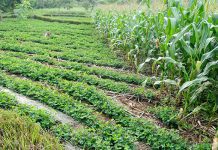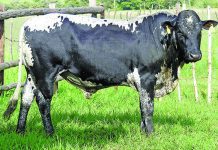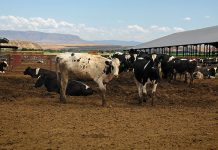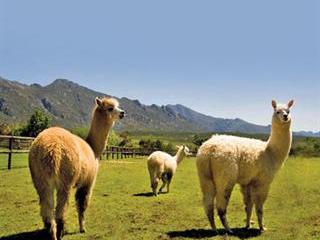The summer rainfall region comprises the entire eastern part of the country from Port Elizabeth eastwards, and northwards to the Limpopo River and beyond. includes a variety of vegetation types including subtropical grassland and forest along the coastal region, thicket, various types of grassland and savannah, and afromontane forest. While orchids are found in these biomes, grassland supports the largest number and diversity of species, particularly the highland grassveld of the Drakensberg mountain chain, regarded as one of our important centres of plant endemism. Very often the ecotones, or transition zones, between vegetation types are particularly rich in orchid species.
There are 52 orchid genera in Southern Africa, most of which are endemic. Most are terrestrial ground orchids, but a number of epiphytic genera such as Polystachya and Mystacidium are found in the summer rainfall region, particularly on trees and bush in the thicket and forest biomes. Many orchid species are found in small local areas where specific environmental conditions prevail and these isolated populations are particularly vulnerable. When landowners become aware of these species it is vital they take adequate steps to preserve them. Being very sensitive to habitat degradation, orchids are important indicators species of the condition of veld.
They’re generally only found in healthy well-conserved grassland, and rapidly disappear when veld is degraded. Regular fires are an important element in grassland ecology and orchids are adapted to fire, which stimulates them to flower. However, incorrect burning practices, particularly too frequently, and burning in autumn and winter, is very detrimental to orchids and other plants, and in particularly to the vigour of grass plants and the productivity of the veld. Spring burning followed by at least a few months rest is essential to preserve the sward’s health and vigour, permitting seeds to germinate and new plants to establish. Burning intervals should not be under four years, followed by adequate rest. Continuous heavy stocking after a burn results in rapid degradation and loss of species.
A variety of adaptations
As in the winter rainfall region, Disa is the genus with the largest number of species and some of the most striking blooms. Disa crassicornis is possibly the most spectacular, with individual plants in suitable habitats reaching heights of nearly 1m. While it’s widespread, ranging from the coast to altitudes of over 2 000m, it’s common nowhere and occurs only in protected places such as rock outcrops and forest verges. Disa pulchra is a beautiful pink species which flowers regularly on the Amathola mountains in December, always in the company of other pink flowers such as hairbells and watsonias, with which it probably shares pollinators.
Disa chrysostachya has tall pencil-like spikes of small bright orange flowers, and can be found along the N2 in the Tsitsikamma region in spring. Its range extends to highland montane grassland in the Barkly East district where it flowers in January. Disa porrecta, a rare species with bizarre orange flowers, has spurs facing upward, to mimic red hot poker flowers and attract the poker butterfly Aeropetes tulbaghia. I was amazed to come across the rare green bearded orchid, Disa lugens, on the Bosberg above Somerset East some years ago, and to find another strong population 200km further east near the Elandsberg in the Hogsback area.
This was a significant extension of the range of this normally coastal winter rainfall species, illustrating the importance of looking out for strange and unusual flowers when walking in the veld. Eulophia is a genus represented by many species in the summer rainfall region, most of which flower in early spring and early summer. Often, a number of species can be found flowering together in damp grassland. For instance, I’ve observed Eulophia macowanii, Eulophia foliosa, Eulophia aculeata and Eulophia clavicornis flowering simultaneously in the Stutterheim district after a grass fire. The Elliot, Ugie and Maclear districts are particularly rich in orchids. Nearly all the genera can be found there with many species of Disa, Eulophia, Corycium, Satyrium, Disperis, Pterygodium, Holothrix and Habenaria.
Adele Moore, a field guide from Maclear, takes groups on a spectacular Orchid Trail on the slopes of Mt Aurora, and she has recorded at least 40 species. Naude’s Nek, the high pass between Maclear and Rhodes, is an excellent place to see orchids and many other alpine flowers. Specialities here are Disa thodei and Disa fragrans which have a wonderful scent, as well as the diminutive but spectacular Huttonaea grandiflora. Another excellent site for viewing orchids and a whole range of mountain flowers is the hiking trail on the slopes of Sentinel Peak in the northern Drakensberg, easily accessed from the car park above Witsieshoek.
However, there should be innumerable unrecorded populations of rare orchid on isolated farms in the summer rainfall region. Education programmes are needed to show private landowners their role in conserving natural habitats and their component species. This series is partially an effort to stimulate interest and motivate landowners to actively participate, even to the extent of establishing reserves on their property. Enormous areas of moist grassland are being destroyed by timber plantations – all the more reason to conserve biodiversity on private farmland. We need to conserve because we don’t know the importance of individual species to healthy ecosystems. Contact Cameron McMaster at [email protected] |fw










